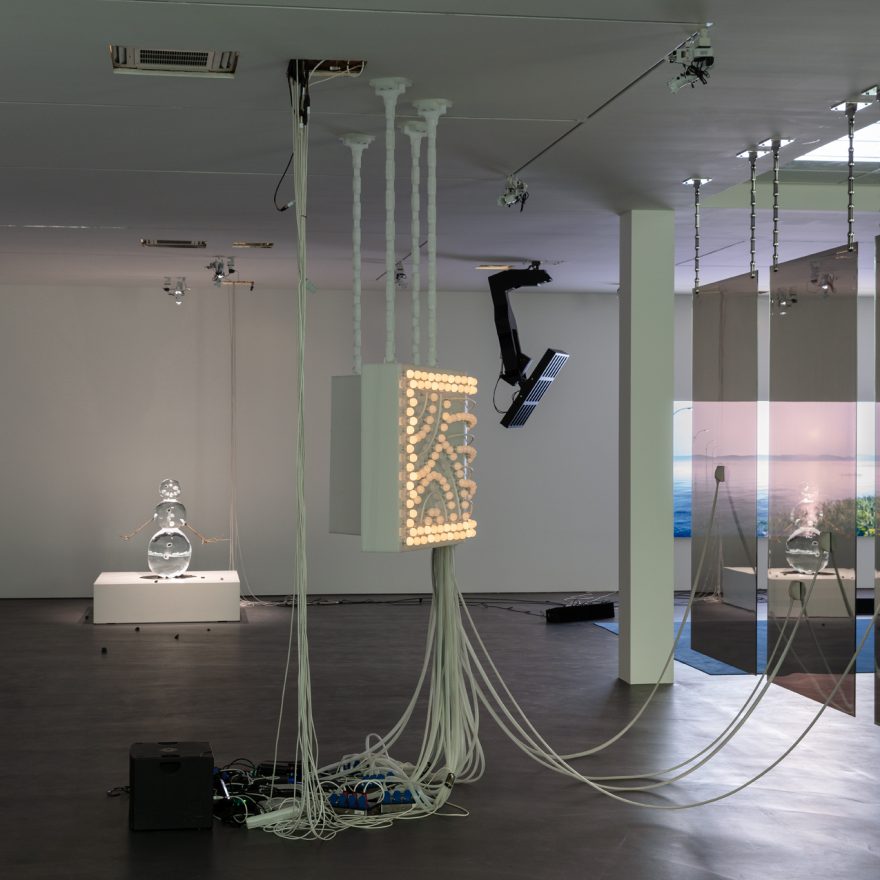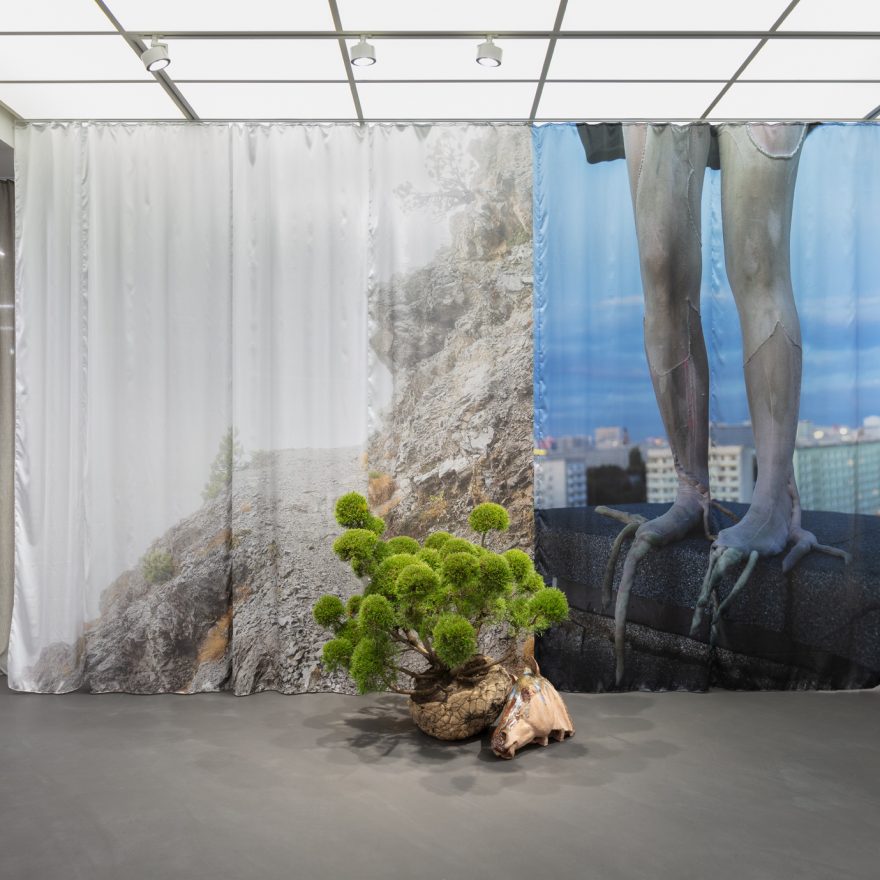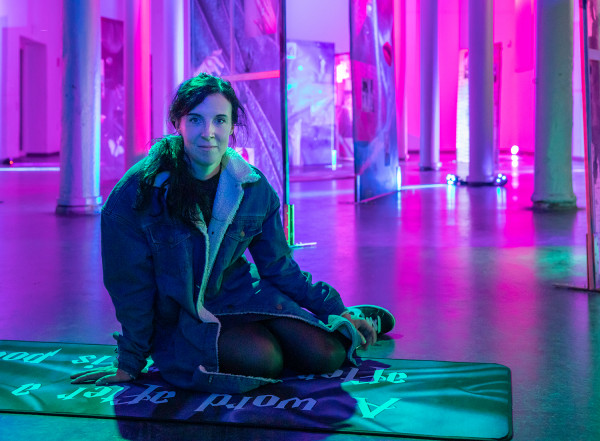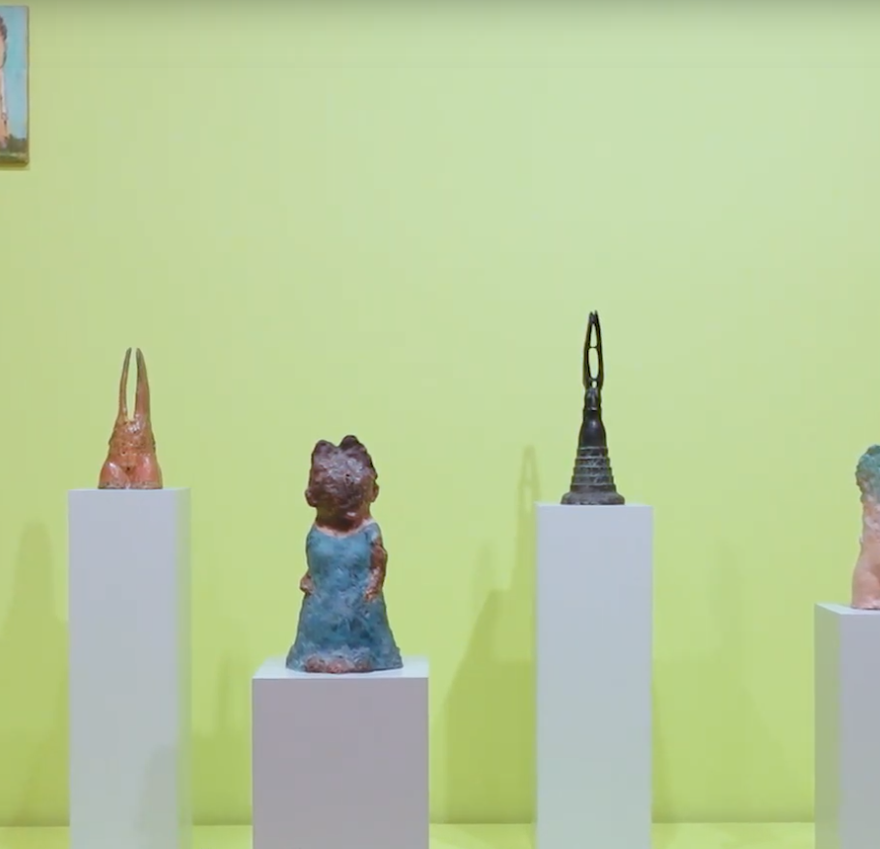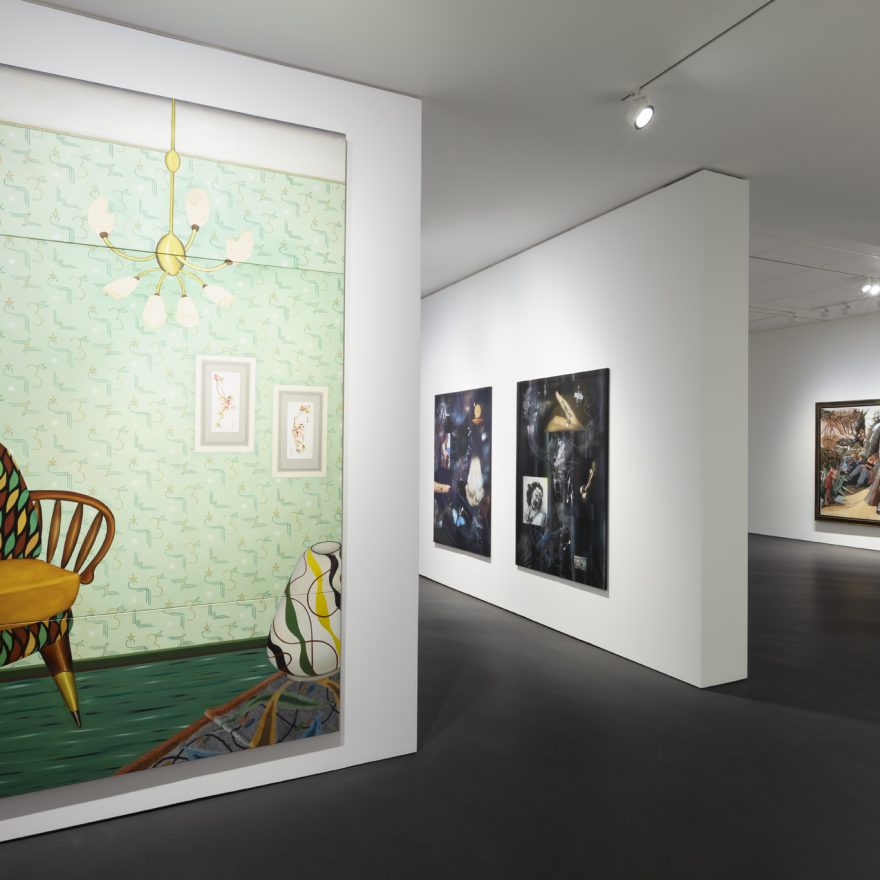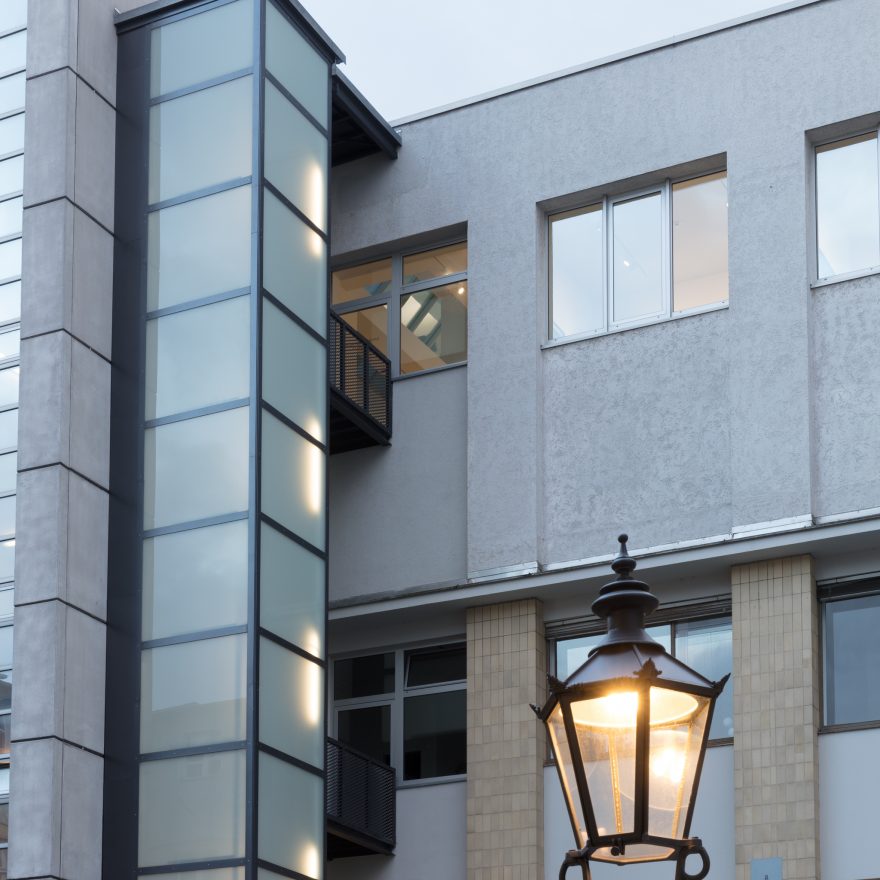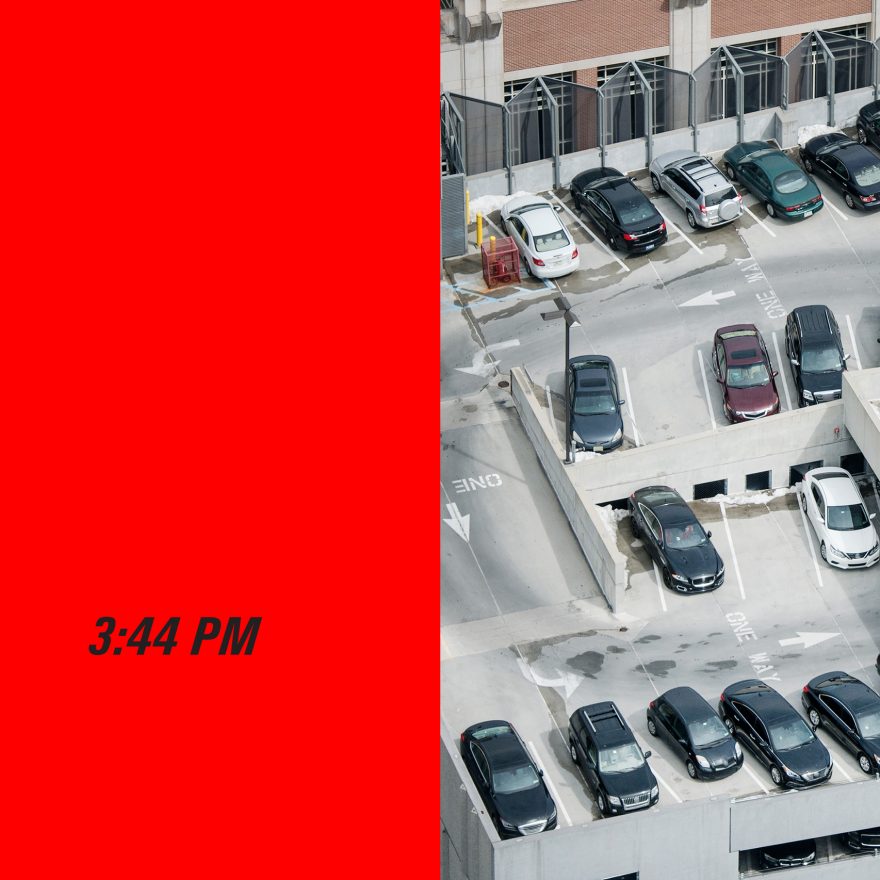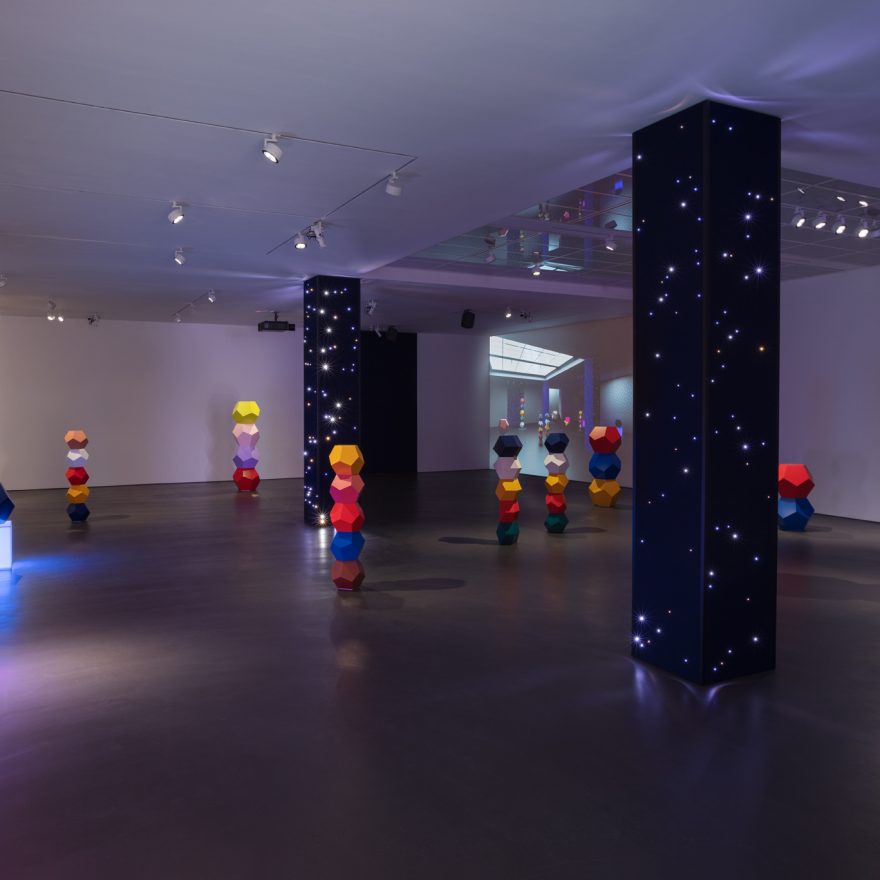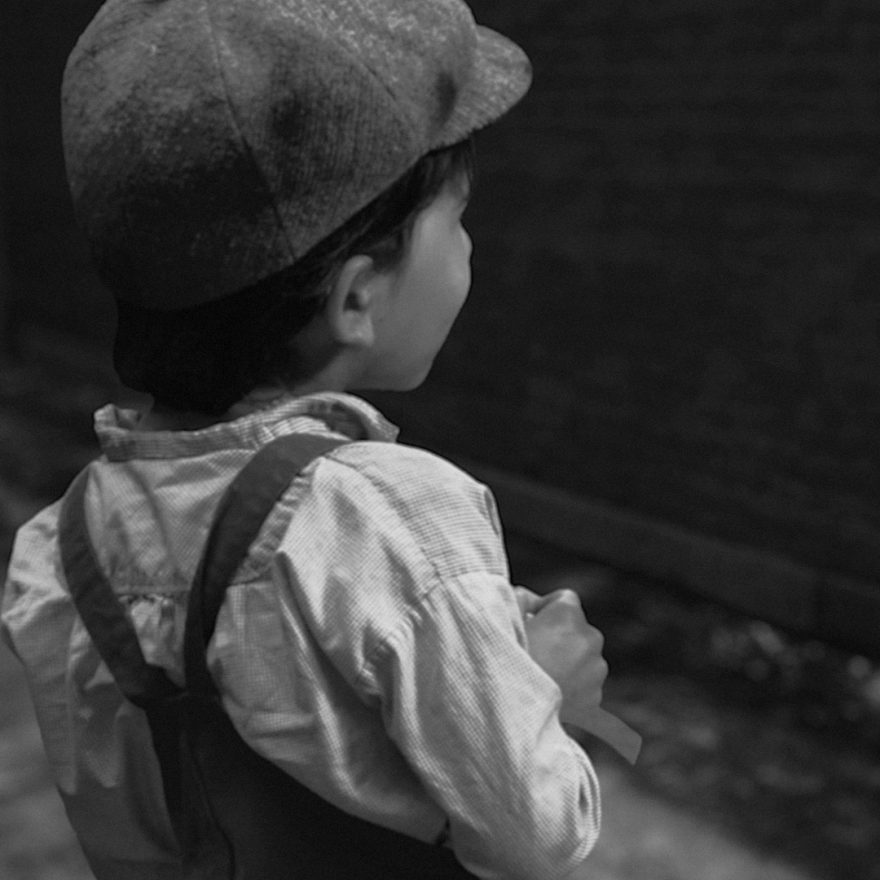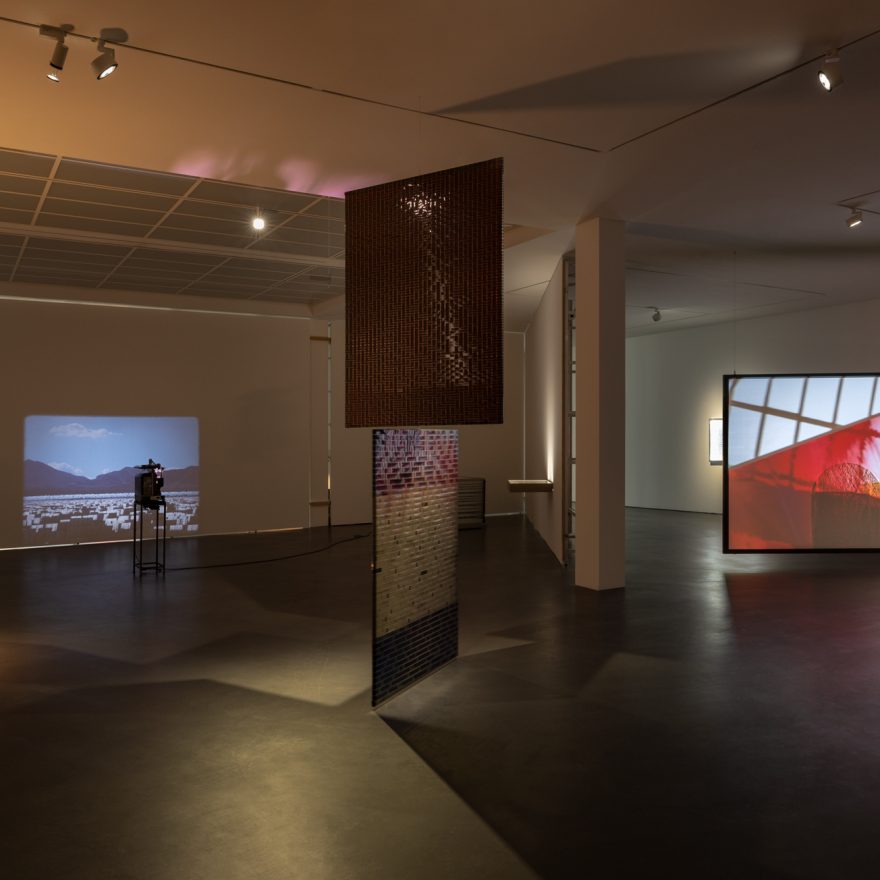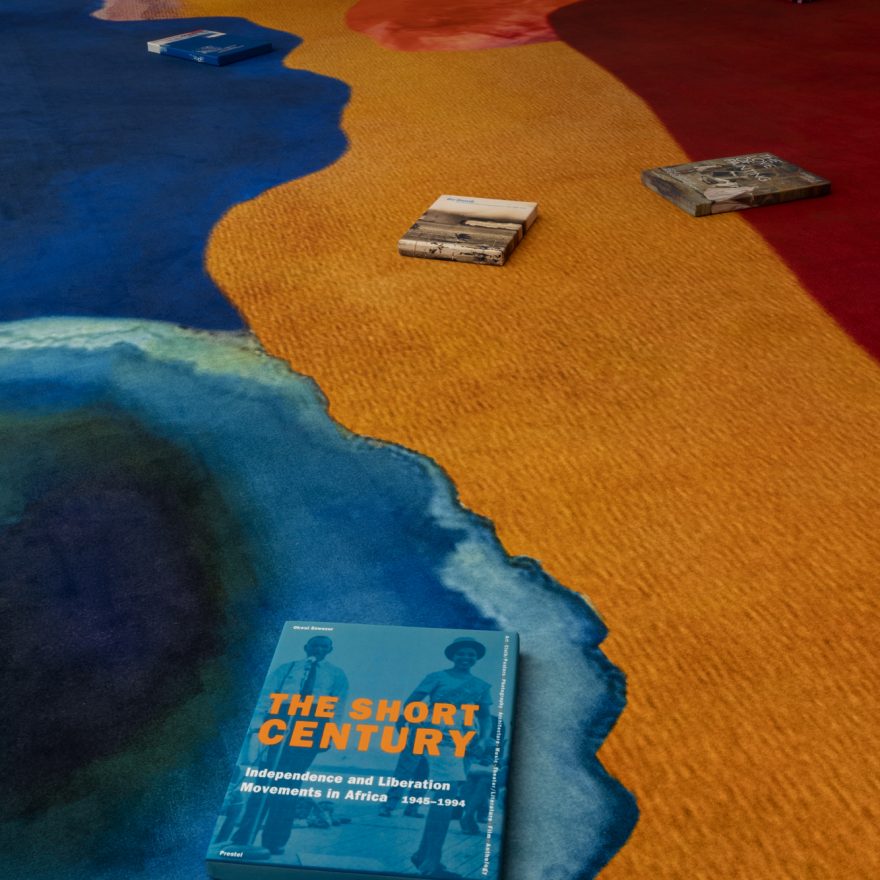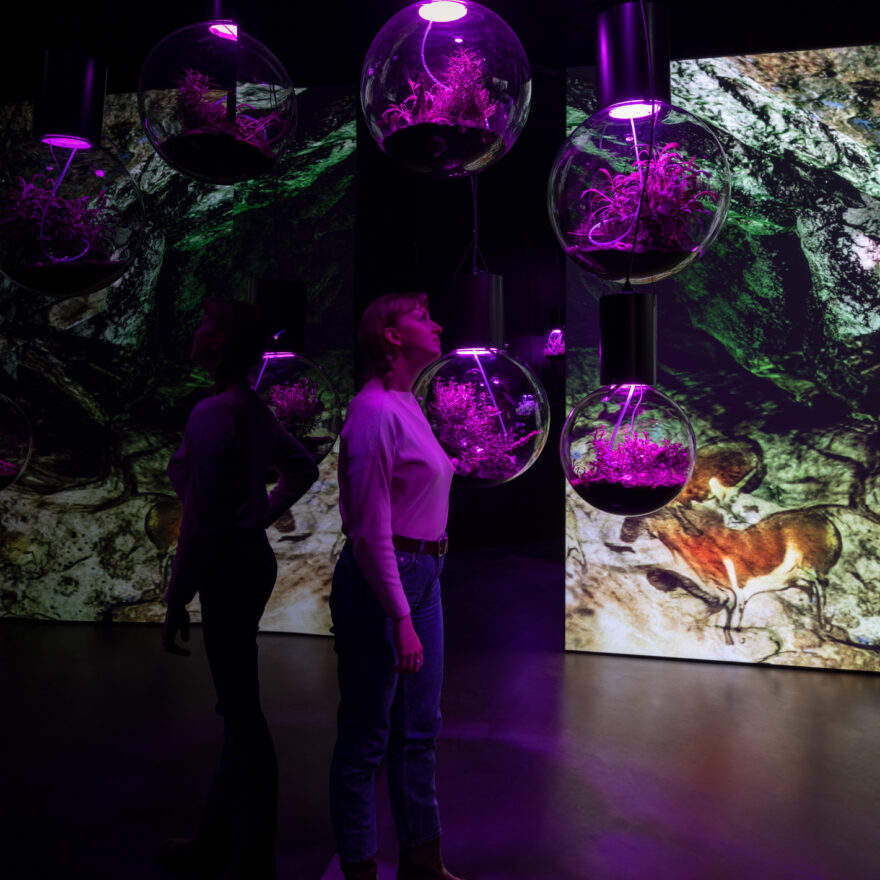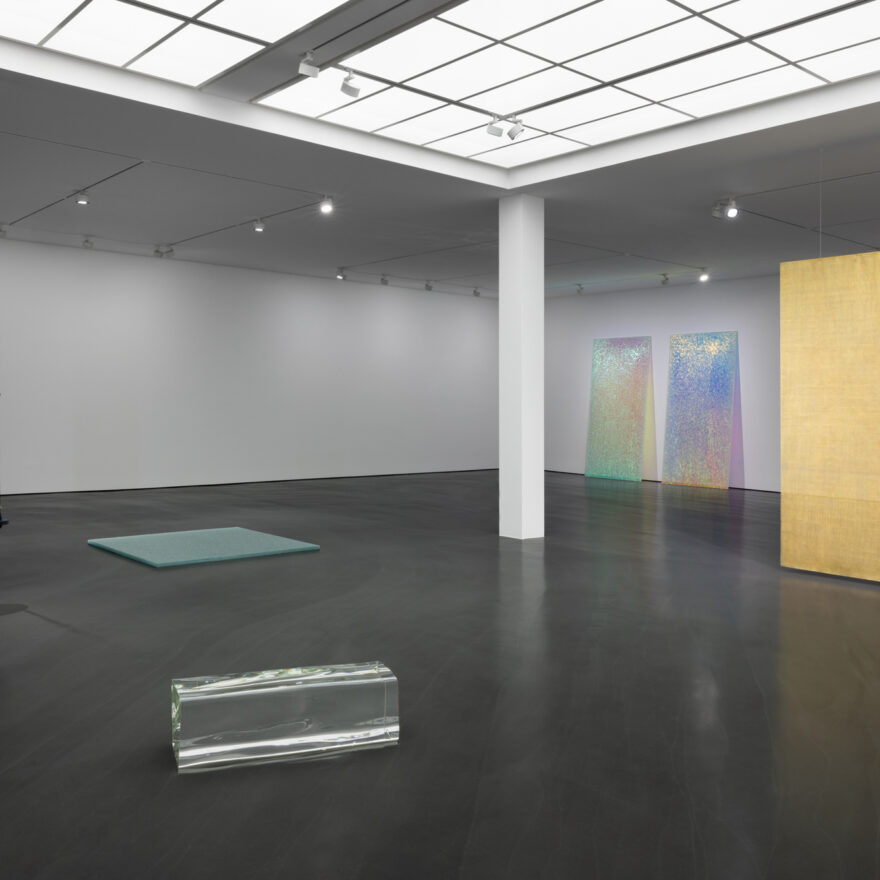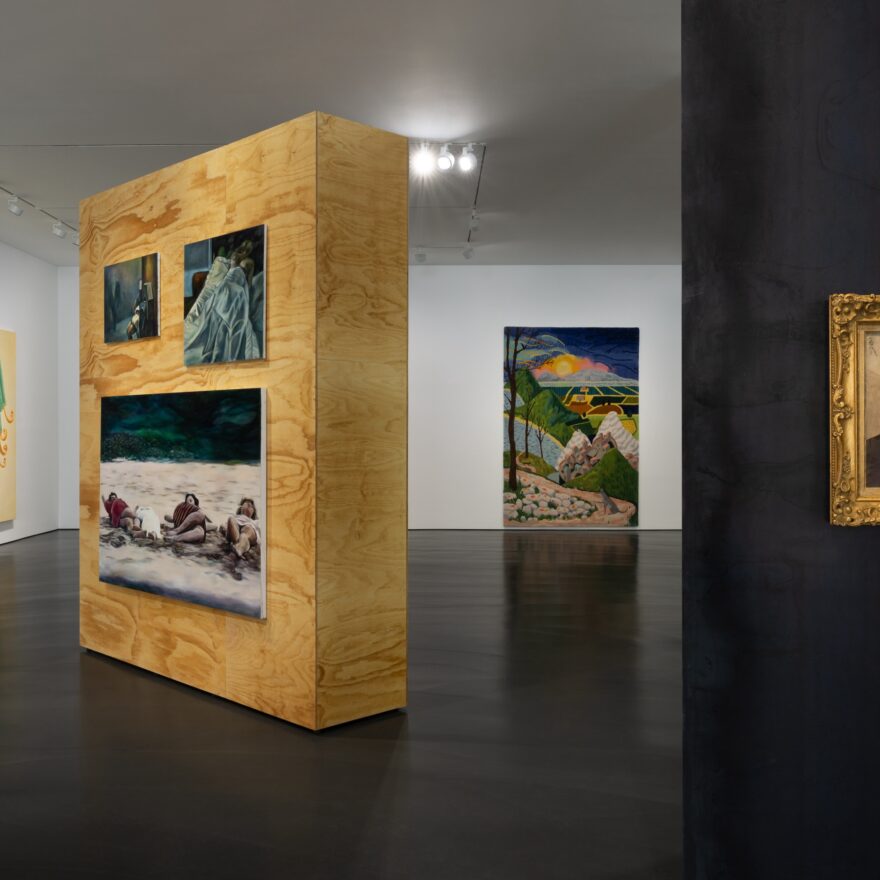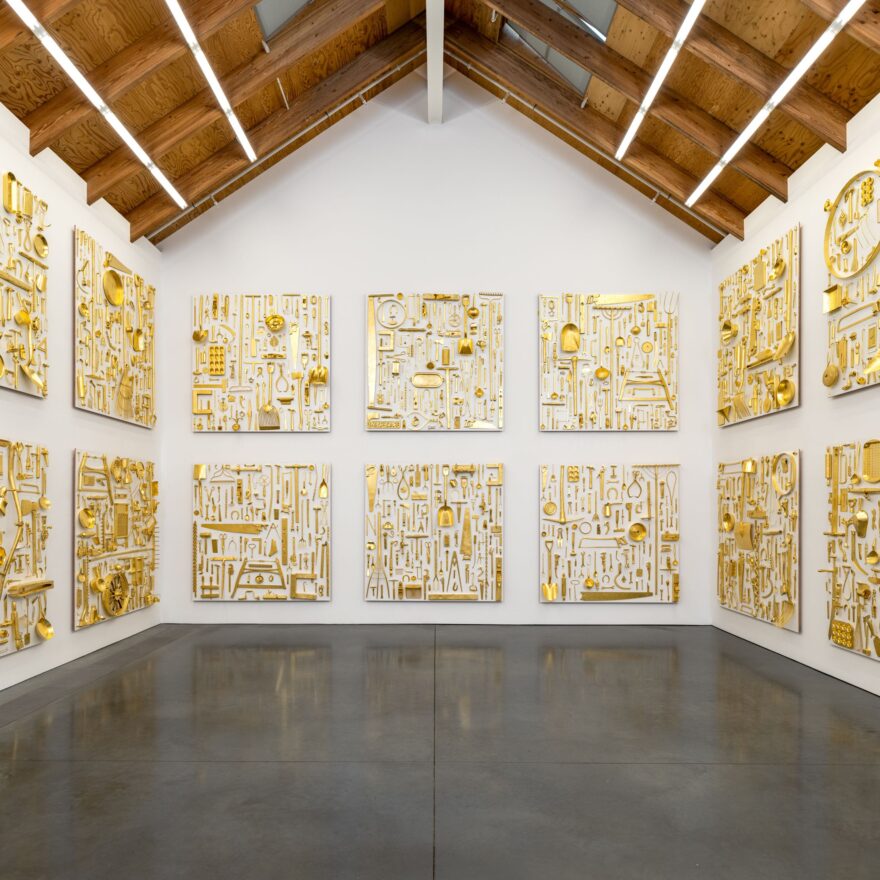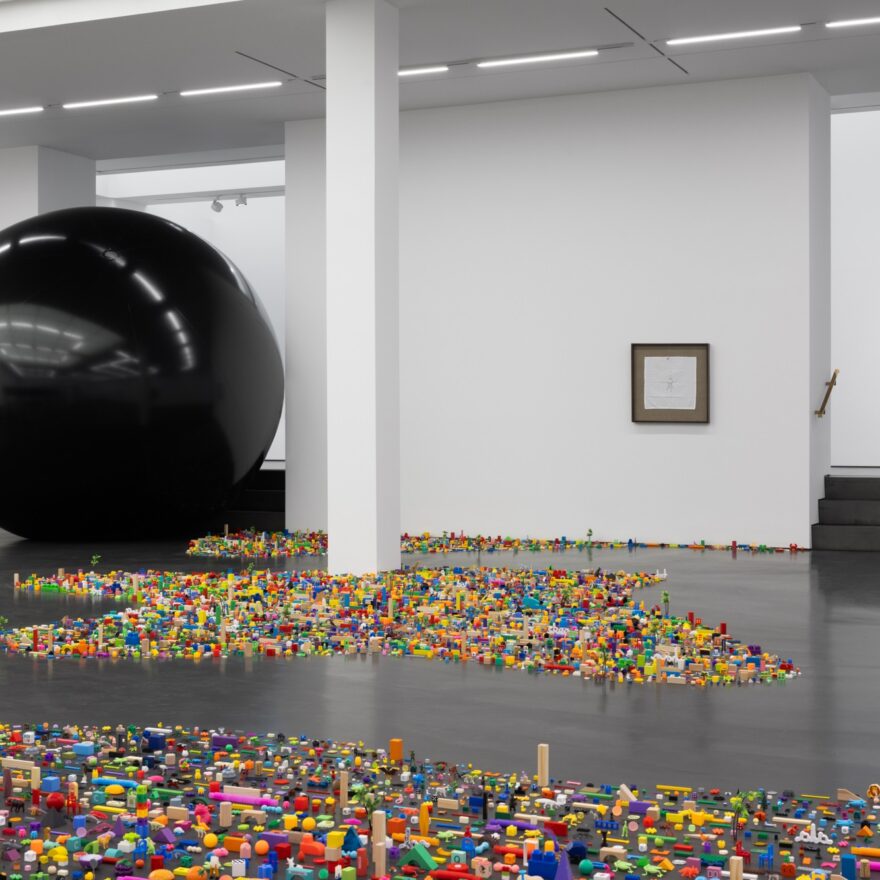Tomasz Kręcicki
Move
14 MAR until 17 APR 2025
Esther Schipper is pleased to announce Move, Tomasz Kręcicki’s second solo exhibition after his first one in our Seoul gallery in 2024. On view will be all new paintings.
Tomasz Kręcicki’s conceptual approach brings a cinematic dimension to the exhibition, where each painting functions as a storyboard frame, with details that invite viewers to construct their own narrative. The story of this exhibition is about a move that begins when we enter the space and encounter the painting of a door, itself the size of a giant door. Placed in the room, like a film prop, it jolts us into a fantastic world. Evoking an entire parallel realm of impressions and even sensations, Kręcicki’s paintings become stepping stones for our imagination: The monumentally enlarged details of seemingly ordinary objects amount to brief glimpses, in close-ups, of a narrative that extends into the past and, importantly, will continue. Events are foreshadowed, creating a viewing experience full of anticipation and suspense. At times, we can even imagine we are hearing a sound, smelling a characteristic scent, or indeed begin to anticipate pain.
The actions the paintings depict give a vivid impression of what it means to move. The artist, who was anticipating his own move to another studio space when he conceived of the exhibition, seems to have spun out scenarios of such a relocation. The works can be loosely associated with specific moments in the process of moving. One group presents objects—some massive and apparently well-loved from their slightly worn condition—and they may represent the selection process: What will he take, what leave behind?
Another cluster of works represents actions: the actual transport of big furniture and heavy appliances carried by large hands across simplified geometric shapes that we immediately know to be steps and staircases. Other paintings allude to the general tidying that goes hand in hand with a move. Throwing things out, in this context is also understood as an act of personal stocktaking. Each of these works show us a detail which is recognized and quickly spins into our own associations with what might happen next: will the hand drop what it’s carrying, the fingers caught on some obstacle?
Paintings of potted plants constitute another group of motifs that even more insistently suggest a past and present, as well as a human presence: Someone cared for them, they may be gifts from friends or family. Represented in various states, they speak of care, neglect, resignation but also resilience. Kręcicki uses the subject to demonstrate his extensive knowledge of and admiration for painters who have represented plants in domestic settings, both the historical genre of vanitas still-lifes and more specifically 20th century and modern depictions as metaphors or symbolic representations. But in a twist characteristic of Kręcicki’s fondness for incorporating subtle touches of humor, the artist also makes strategic use of cinematic tropes, such as the melodramatic fiery sky silhouetting a dried-out plant.
Despite the visual wit and playfulness often associated with the over life-sized scale of his motifs, Kręcicki’s subject matter remains inherently existential, addressing both contemporary politics and its repercussions on the individual. For Kręcicki, who lives in Poland, his move also brought to mind people who have to flee their homes, not in organized “moves” but in often traumatic escapes from home, workplace or country. He knows his is a choice, even a sign of improvement and greater freedom.
Tomasz Kręcicki, born 1990 in Żary. Lives and works in Kraków.
The artist studied at the Academy of Fine Arts in Kraków (2010–2015) and the Academy of Fine Arts, Nuremberg (2014–2015). Residencies and fellowships include LIA Programme Residency, Spinnerei Leipzig (2018), MeetFactory Residency, Prague, (2018), Fores Project Residency, London (2022).
Institutional solo exhibitions include Light as a Feather, Longlati Foundation, Shanghai (2024); XXL, Muzeum Regionalne, Stalowa Wola (2020); Spirit level, Grey House Foundation, Kraków (2019); XXL, BWA Tarnów (2019).
Institutional exhibitions as part of the artist group Potencja include Potencja – Humoral Theory: Quattro Stagioni, Galeria Bielska BWA, Bielsko-Biała (2022); Potencja – Humoral Theory, BWA Zielona Góra (2021).
The artist’s work is held in public collections, among them: BY ART MATTERS, Hangzhou; Beiqiu Museum of Contemporary Art, Nanjing; Longlati Foundation, Shanghai; Sammlung Hildebrand, Leipzig; The ING Polish Art Foundation, Warsaw; mBank Art Collection, Warsaw; Krupa Art Foundation Wrocław; National Museum, Gdańsk.
For press inquiries please contact David Ulrichs. Tel: +49 (0) 176 50 33 01 35 or david@davidulrichs.com.
Thomas Demand
14 MAR until 17 APR 2025
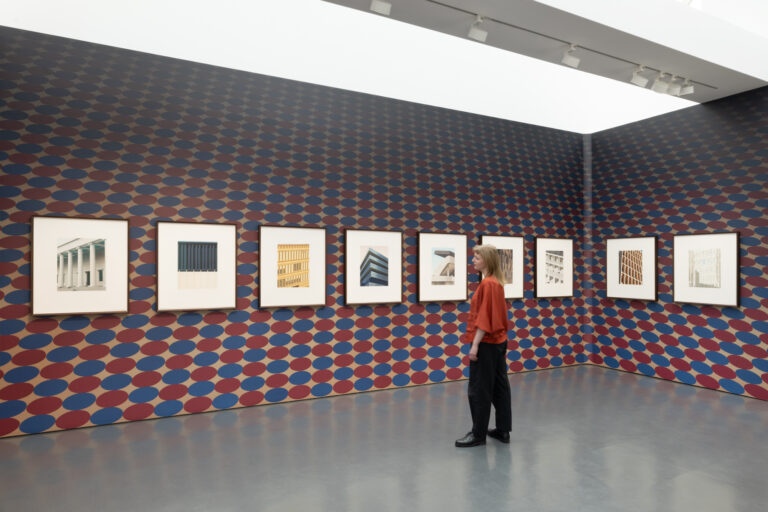
Exhibition view: Thomas Demand,
Esther Schipper, Berlin, 2025
Courtesy the artist and Esther Schipper, Berlin/Paris/Seoul
Photo © Andrea Rossetti
© Thomas Demand / VG Bild-Kunst, Bonn 2025
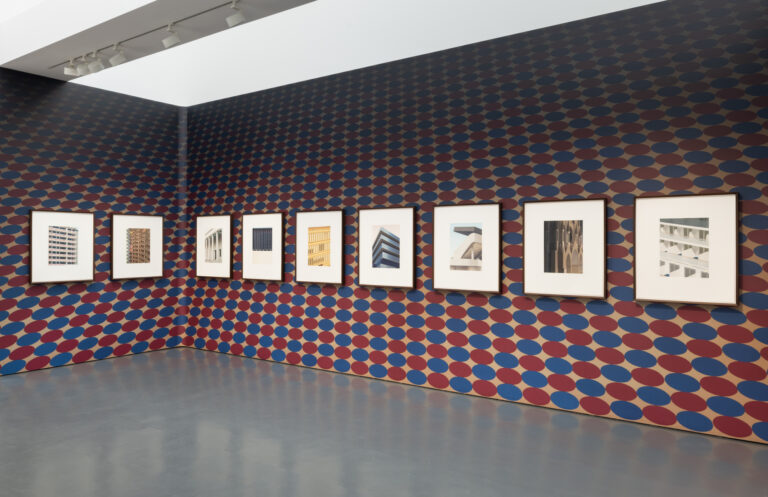
Exhibition view: Thomas Demand,
Esther Schipper, Berlin, 2025
Courtesy the artist and Esther Schipper, Berlin/Paris/Seoul
Photo © Andrea Rossetti
© Thomas Demand / VG Bild-Kunst, Bonn 2025
Esther Schipper is pleased to announce a presentation by Thomas Demand, who has had five solo exhibitions with the gallery. On view will be a suite of eleven hand-printed lithographs, produced by the legendary print publisher Gemini G.E.L., and installed on a new wallpaper work especially conceived for this presentation.
Exquisitely crafted, the suite of lithographs depicts architectural structures that hold historical and cultural significance. The series includes notable works such as Concattedrale Gran Madre di Dio, depicting the 1970 cathedral in Taranto, Italy, designed by Gio Ponti. Demand highlights the cathedral’s openwork walls, reminiscent of a paper cutout, and its role as a sanctuary for immigrants today. Another work, Notre-Dame de Reims, reflects on the tragic bombing of the Reims Cathedral during World War I and its subsequent reconstruction, symbolizing the fragile constructions of national identity. Shepherd Ivory Franz Hall II pays homage to the rational, modular efficiency of the UCLA building designed by Paul Revere Williams, the first Black member of the American Institute of Architects. A section of the colonnades of Munich’s imposing Haus der Kunst, built by the Nazis as a Neoclassical temple to German art, stands as an awkward relic of the country’s history.
The suite was produced by the Los Angeles-based specialty print publisher Gemini G.E.L. With their subtle coloration and embossed detailing, the prints encapsulate key aspects of Thomas Demand’s process: the transformation of a photographic image into a model made of color paper or cardboard, which in turn is represented as a photograph. This suite of lithographs continues the process by transforming Demand’s image into a print capturing its fine details and textures. The suite of eleven lithographs was hand printed using 90 photolithography plates and 133 colors, with delicate embossed areas added to the skies, windows, shadows and alcoves, further enriching their depth and texture. This cycle of deconstruction, construction, and reconstruction is evident in the final works, which have both understated and strong blended colors that enhance the architectural forms, shapes, and shadows.
The roots of the series lie in the covers Demand conceived for the Italian architecture magazine DOMUS when, in 2020, the renowned architect David Chipperfield was guest editor of the magazine. “The front of a magazine is itself a kind of façade” the artist noted at the time. The writer and art critic Jonathan Griffin has written a text for each lithograph that gives historical context to the depicted structure and speaks about the relevance of the motif to Demand.
The prints are installed on a new wallpaper work by Demand that features a pattern of blue and red circles.
Interpreted by Demand in a color version, it draws on the vintage carpeting in Berlin’s ICC, the International Congress Centrum. Inaugurated in 1979 in what was then West-Berlin, the ICC was at the time the most expensive structure built in the city. Declared a landmark in 2019, the building has been largely abandoned in recent years.
Thomas Demand was born in 1964 in Munich, Germany. He studied at the art academies in Munich and Düsseldorf. He received an MFA from Goldsmiths, University of London. Since 2011, he has been working as a professor at HFBK, the Hamburg University of Fine Arts. The artist lives and works in Berlin and Los Angeles.
Thomas Demand’s The Triple Folly, a sculptural pavilion the artist designed in collaboration with Caruso St John Architects, was inaugurated in September 2022 at Danish textile manufacturer Kvadrat’s headquarters in Ebeltoft in Denmark.
Thomas Demand’s work has been exhibited extensively. Selected solo exhibitions and special projects include:
The Stutter of History, Taipei Fine Arts Museum (2025); The Stutter of History, Museum of Fine Arts, Houston (2024); The Stutter of History, The Israel Museum (2023); Forms and Patterns of Azzedine Alaïa, Azzedine Alaïa Foundation, Paris (2023); The Stutter of History, Jeu de Paume, Paris (2023); HOUSE OF CARD, MOCA, Toronto (2022); The Stutter of History, UCCA Edge, Shanghai (2022); Mundo de Papel, Centro Botín, Santander (2021); Mirror Without Memory, Garage Museum of Contemporary Art, Moscow (2021); HOUSE OF CARD, M – Museum, Leuven (2020–21); The Boat is Leaking. The Captain Lied, Fondazione Prada, Ca’ Corner della Regina, Venice (2017); Thomas Demand, Nouveau Musée National de Monaco, Villa Sauber – Project Space, Monaco (2016); FOCUS: Thomas Demand, The Modern, Fort Worth (2016); Daily Show, The Common Guild, Glasgow (2015); Modellstudien, Siza Pavillon, Raketenstation Hombroich, Neuss (2015); Pacific Sun, LACMA Los Angeles County Museum of Art, Los Angeles (2015); Model Studies, Graham Foundation, Chicago (2013); Museum of Contemporary Art, Tokyo (2012) (traveled to National Gallery of Victoria, Melbourne); The Dailies, Kaldor Public Art Projects #25, Sydney (2012); Nationalgalerie, Boijmans van Beuningen, Rotterdam (2010); Neue Nationalgalerie, Berlin (2009); Presidency. Embassy, MUMOK, Museum Moderner Kunst, Vienna (2009), and Thomas Demand, The Museum of Modern Art, New York (2005).
Demand participated in the 50th Venice Biennale (2003) and represented Germany at the 26th São Paulo Biennial (2004). In 2011, Demand curated the critically acclaimed exhibition La Carte d’après Nature at the Nouveau Musée National in Monaco, and in 2016 L’image volée at Fondazione Prada, Milan.
His work is represented in the collections of The Museum of Modern Art, New York; Solomon R. Guggenheim
Museum, New York; Walker Art Center, Minneapolis; Museum Folkwang, Essen; National Gallery of Canada, Ottawa; Tate Modern, London; Hirshhorn Museum and Sculpture Garden, Washington, D.C.; Museum of Contemporary Art, Chicago, and Philadelphia Museum of Art, Philadelphia.
For press inquiries please contact David Ulrichs. Tel: +49 (0) 176 50 33 01 35 or david@davidulrichs.com.




